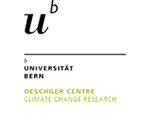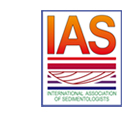Session OSM 11
 |
Image credit: Kathy Willis |
Biodiversity and Refugia - Lessons Learned from the Past
Convenors
Sheri Fritz, Surangi Punyasena, Kathy Willis
Description
The geological record provides insight into the long-term dynamics of populations and communities and the processes that generate biodiversity, including the role of cold and warm-stage refugia, where organisms persisted through unfavorable environmental conditions in adjoining areas.
This session welcomes contributions that use fossils, molecular and geochemical tools, and/or modeling to examine how climate change, biological interactions, or other environmental conditions affected the past and present composition and distribution of organisms and influenced patterns of biodiversity. We invite contributions from high to low latitudes and that consider any time interval within the Cenozoic.
Talks and Posters
Talks
Thursday, 14 February 11:00 - 11:45
Chair: Sheri Fritz, Kathy Willis
11:00 - 11:15
Non-linear responses of vegetation to orbital forcing across the temperate to tropical transition in South America
Keith Bennett
11:15 - 11:30
Glacial refugia of Cedrus atlantica in Morocco: new records bring new interpretations
Rachid Cheddadi, Majda Nourelbait, Bruno Fady, Ali Rhoujjati
11:30 - 11:45
Using elevational gradients to discuss the origin of the highly biodiverse neotropical table mountains of northern South America
Sandra Nogué, Valentí Rull, Teresa Vegas-Vilarrúbia
Posters
Display: Wednesday, 13 February and Thursday, 14 February
Author attendance: Thursday 16:00 - 18:00
Chair: Sheri Fritz, Kathy Willis
Biodiversity and land cover change in Europe over the Holocene: A functional approach based on pollen data
Pam Collins, Basil Davis, Jed Kaplan
Development and application of Australian lacustrine ostracod-based transfer functions
Chris Gouramanis, Stuart Halse, Patrick De Deckker, Daniel Wilkins
Eastern Andean Patagonia (40º-51ºS) vegetation and climate variability during the Holocene related to southern westerlies fluctuations and recent human interactions. Impacts on Patagonian forests and steppe plants communities.
Gonzalo Sottile, Ma. Alejandra Marcos, Florencia P. Bamonte, Marcos E. Echeverría, Ma. Eugenia De Porras, Marcela S. Tonello, Ma. Virginia Mancini, Ma. Martha Bianchi
Genetic differentiation in the Patagonian-fueguian rodents Abrothrix olivaceus and A. longipilis (Rodentia: Cricetidae) associated to the major Pleistocene-Holocene climatic changes: using molecular data to the global changing assessment.
Matias Mora
Interglacial variability from the Middle Pleistocene up to the Holocene after molluscan assemblages and geochemical records from NW European tufa sequences.
Nicole Limondin-Lozouet, Julie Dabkowski
Late Quaternary palaeoenvironments of the southern Cape, South Africa: palynological evidence from three coastal wetlands
Lynne Quick, Michael Meadows, Brian Chase, Andrew Carr, Mark Bateman, Torsten Haberzettl, Jussi Baade, Roland Mäusbacher
Late-Holocene climate and environmental history in the Lake Victoria basin: a sediment-based evidence from pollen, charcoal, d13C isotope, spores and blue-green algae
Casim Umba Tolo, Julius B Lejju, Morgan Andama, David Taylor
Marine and terrestrial response of the Black Sea/Northern Anatolia region to rapid climatic variability during the marine isotope stage 3
Lyudmila S. Shumilovskikh, Helge W. Arz, Hermann Behling
Resilience of an ancient tropical forest landscape to 7500 years of environmental change in the Western Ghats, India
Shonil Bhagwat, Sandra Nogue, Kathy Willis
The response of planktic foraminifera to oceanic environmental changes during cenomanian-turonian transition of Karai Shale, Uttattur group, Southern India
Shanmugavalli G., Venkatachalapathy R.
Using the fossil record to reassess the functioning of the southern Levant as a biodiversity pool during European glaciations
Lior Weissbrod, Mina Weinstein-Evron















